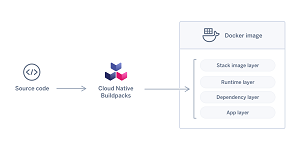News
Google Cloud Development Updates: Functions Service, Container Building
The Google Cloud Platform (GCP), continually fighting AWS and Azure for cloud development market share, recently announced updates to its Cloud Functions service for serverless computing, along with a new offering for building container images.
Here's a summary of what's new:
-
Google Cloud Functions: This is a Functions-as-a-Service (FaaS) platform that powers serverless, pay-as-you-go computing, in which the provider takes care of server setup and management. It fosters event-driven computing in which ready-made functions kick off in response to user or automated actions. It compares to AWS Lambda and Azure Functions.
 [Click on image for larger view.] Use Cases (source: Google).
[Click on image for larger view.] Use Cases (source: Google).
"Functions have emerged as a great fit for serverless application backends to integrate with third-party services and APIs, or for mobile or IoT backends," Google says. "You can also use functions for real-time data processing systems, such as processing files as they are uploaded to Cloud Storage, or to handle real-time streams of events from Pub/Sub. Last, but not least, functions can serve intelligent applications like virtual assistants and chat bots, or perform video, image or sentiment analysis."
Among many updates to the service are:
- New runtimes: .NET, Java and Ruby join Node.js, Python and Go
- 11 new regions added for a total of 19
- Improved local developer experience
- Improved Cloud Functions UI experience
- Security enhancements with fine-grained controls
More information is available in an Oct. 8 blog post and a quickstart.
-
Google Cloud Buildpacks: This new offering leverages open source technology -- Cloud Native Buildpacks from the Cloud Native Computing Foundation (CNCF) -- to simplify working with container images, which package up an application's programming code and related dependencies to ensure the app runs consistently across different computing environments.
 [Click on image for larger view.] How Cloud Native Buildpacks Work (source: Heroku).
[Click on image for larger view.] How Cloud Native Buildpacks Work (source: Heroku).
Specifically, buildpacks simplify creating container images from source code -- no Dockerfile is needed as in other implementations -- and the Google implementation works with its container platforms including:
- Cloud Run, a fully managed service for developing and deploying highly scalable containerized applications on a serverless platform.
- Anthos, for running Kubernetes (container orchestration) clusters anywhere, in both cloud and on-premises environments.
- Google Kubernetes Engine (GKE), a secured and managed Kubernetes service.
Google says: "You can use buildpacks in several ways: First, if you haven't already fully adopted containerization, buildpacks are a way to use the latest container runtime and delivery platforms. They're also useful for quick projects when you don't have time to properly vet and customize a Dockerfile that you might find in the wild."
 [Click on image for larger view.] Buildpacks and Other Google Cloud Services (source: Google).
[Click on image for larger view.] Buildpacks and Other Google Cloud Services (source: Google).
The open source Google Cloud Buildpacks now serve as the build system for the aforementioned Cloud Functions, letting users build both apps and functions into container images, and for the platform's App Engine, used to build highly scalable applications on a fully managed serverless platform. As shown in the graphic above, they also work with several other Google Cloud services.
More information is provided in an Oct. 9 blog post and an introduction video published last month.
About the Author
David Ramel is an editor and writer at Converge 360.